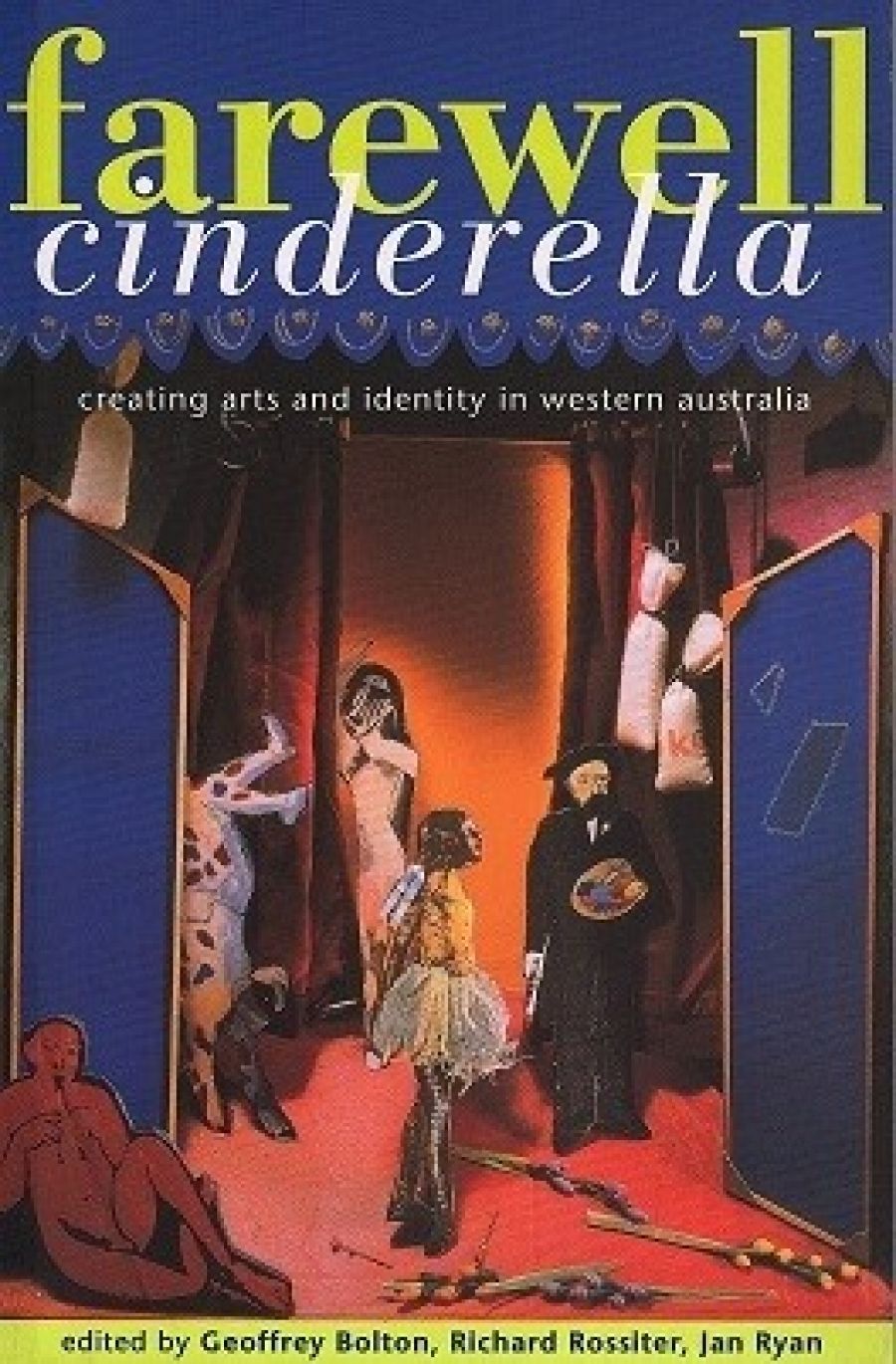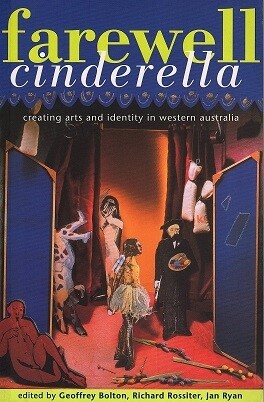
- Free Article: No
- Contents Category: Cultural Studies
- Review Article: Yes
- Article Title: Late Bloomer
- Online Only: No
- Custom Highlight Text:
As one who has lived in Western Australia for the greater part of her life and currently works in the arts, my interest was piqued by the claim of the editors of his collection that Western Australia may bid farewell to the defensive term ‘Cinderella State’, once adopted in relation to its arts and culture. Traditionally perceived in the cultural imagination as ‘behind’ its east coast counterparts, Western Australia has struggled with the entrenched perceptions of many in eastern cultural centres: an edenic state with its beach culture, sun and outdoor lifestyle, somehow not quite in step with the rest of the country, and possessing a slight but discernible cultural ineptitude. As one contributor to this collection states, Western Australia has been viewed as ‘an isolated enclave sitting on the edge of a void’; insularity and parochialism have regularly been invoked when describing the most remote city in the world.
- Book 1 Title: Farewell Cinderella
- Book 1 Subtitle: Creating Arts And Identity in Western Australia
- Book 1 Biblio: UWA Press, $38.95pb, 352pp
- Book 1 Cover Small (400 x 600):

- Book 1 Cover (800 x 1200):

Farewell Cinderella is a collection of essays, each with a specific focus on areas of cultural development in the state. The chapters document past struggles and celebrate the achievements that, according to the editors, furnish the evidence that the late bloomer has now arrived at the ball. Beginning with arts practice – theatre, music, literature, visual arts and dance – before moving on to radio and television broadcasting, and architecture and religion, the contributors provide historical overviews and highlight what they believe to be determining factors in the development of a collective cultural state identity. For many Western Australians, two defining factors of west coast living are landscape and isolation, and both of these elements feature prominently in many of the chapters.
The sections on theatre, dance and music are largely historical, detailing people, places and events. The overview of theatrical activity is scholarly and comprehensive in its coverage, and the chapters on dance and music are similarly of an historical nature and note the extent of European influences prior to the development of a distinctive Western Australian identity. The chapter on dance lacks the scholarly finesse of some of the other chapters; I found the shifting back and forth between generalist arguments relating to dance and gender and the specificity of the development of dance practice in Western Australia somewhat disconcerting. The weight of discussion focuses on UK-trained Linley Wilson’s life and on her contribution to the art form’s development, taking Wilson’s story as representative of the story of dance in Western Australia. The discussion of music includes an observation repeated in many of the chapters: that ‘pioneer’ leaders in the arts community often came to Western Australia as adults and put their ideas into practice from the perspective of experience and study overseas or in the eastern states. The musical overview largely comes to a halt in the 1950s, which is a shame when considering the vibrancy of the state’s thriving contemporary music scene, for which Western Australia is noted nation-wide as a leading and innovative force.
A movement away from Eurocentric perceptions and influences, and the corresponding altered perception of landscape, is another repeated theme. The chapter on literature is a focused analysis of the relationship between landscape and identity in Western Australian prose narrative, commencing with the letters and observations of early settlers and moving through a litany of well-known literary identities, including Stow, Jolley, Hewett, Weller, Morgan, Winton, Drewe and Scott. Short readings of prose examples are used to illustrate an evolving relationship (in the case of non-indigenous writers) with the Western Australian landscape, from settlement and profound alienation to a contemporary experience of ‘synonymity’. Similarly, the chapter on visual art (specifically landscape painting) refers to a tussle between attempts to familiarise the environment with European standards before a true appreciation of the unique beauty of the land can be reached.
The architectural palimpsest of the state is explored through the styles and cultural impulses that have dictated the present cityscape and suburbs. The inherent ambivalence of settler-constructed architecture is noted, and the confusion of readings offered by the state’s contemporary architecture is said to reflect the shift from a monocultural colonial past to one rich in many collective influences.
From the physical to the spiritual, a similar evolution in relation to the state’s religious landscape is mentioned in the closing contribution, which, for the most part, is generalist rather than state-specific, but which notes the growing diversity of religious practices.
A chapter concerning the historical implications for a ‘remote’ and ‘regional’ community of electronic media highlights the significant power of radio and television to combat isolation and to bridge the divide between regional and metropolitan areas. This, maintain the authors, enables a sense of inclusivity in an overall ‘Australian’ identity, as well as fostering a stronger sense of a specific state identity.
The collected essays are diverse both in style and approach. These range from scholarly, well-researched theoretical arguments to less sophisticated readings, and from specific case histories to broad-based discussions. Attempting to capture the cultural development of a state over almost two centuries is obviously an impossible task, and the editors acknowledge what soon becomes apparent upon reading the eight perspectives: the stories are ‘predominantly of the past and are constrained by their mainstream focus’. They consequently function as a form of partial testimony to past achievements, but few chapters linger on the contemporary situation, which might have better supported the eponymous claim. The question remains: are we in Western Australia living happily ever after? While all contributions provide informed insights and perspectives on the development of a Western Australian identity, I feel that the declaration that Western Australia has ‘arrived at the ball’ requires a greater contemporary positioning of Western Australian arts and culture.
This collection certainly will hold interest for Western Australian readers, and the recurring themes of alienation and belonging, post-colonial concerns and theories of gender as revealed in arts and cultural practices across many genres are national in their scope; thus the book should appeal to a wider audience.
Regularly, when discussing the present, the contributors find it difficult to set Western Australia in isolation from the rest of the country due to the commonalities between demographic and cultural trends. This itself is evidence of Western Australia’s emergence as a fully fledged member of the national and international community, treading the balance between acceptance and particularity.


Comments powered by CComment